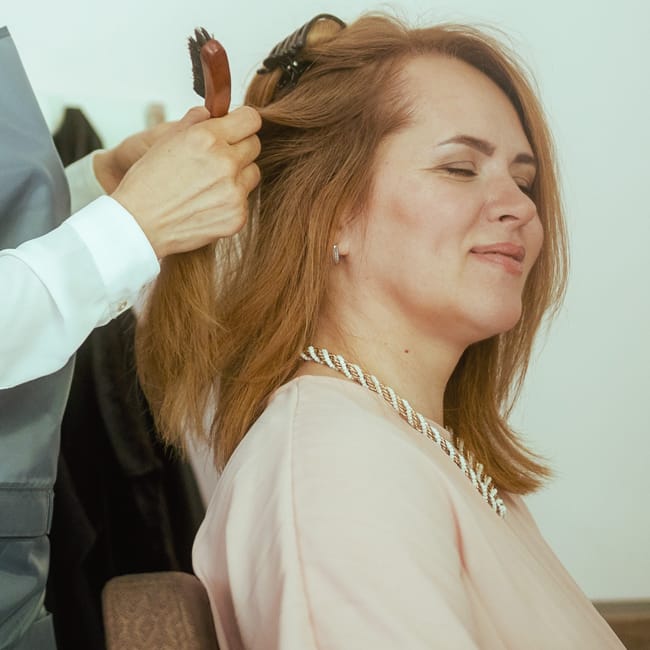You’re probably already seeing the bob haircut everywhere — and it isn’t going anywhere anytime soon. Despite its continued popularity (does the bob ever truly go out of style?) there will be some bob regrets the day after trips to the salon. And that’s because if your bob isn’t cut to suit your face shape and hair type it can look awkward and frumpy, according to Celebrity Hairstylist Justin Hickox. One your hair has been cut to a bob, you may feel stuck, though. You may wonder what can be done other than waiting it out and allowing your bob to grow.
Luckily, your fate isn’t sealed — even if you’ve just been given the worst bob of your life.
Hickox explains how to choose the right short hairstyle for your face shape and hair type. These tips can help you achieve short hair greatness. He groups face shapes into two categories — those needing more length in their faces (such as round faces) and those that want more wideness in their faces (such as oblong face shapes).


1. Thin, Straight Hair and a Wide or Long Face
If you have thin, straight hair and a wide face, Hickox recommends a bob that features some beveling at the back to make it look thicker. Light, hidden layering can also lighten up the bottom and make your face appear longer, and bangs are always a good idea, but it’s important to avoid cutting them in a square shape. Bangs can add the illusion of density to your hair, while a length that’s longer than the chin will create the illusion of more face length.
If you have a longer face shape, cutting your length so that it’s shorter than the chin can help make your face look less long and add the illusion of more width. Beveling in the nape is a good idea for more fullness, and if you want bangs, fuller is better (Hickox recommends stopping them around the brows).

2. Curly Thin Hair
For curly hair and a wide face, Hickox recommends keeping your bob length below the chin and adding a little bit of layering to the sides. If you have a longer face, keep your length slightly shorter to add fullness to the face and a small amount of layering can remove bulk and keep hair from lookin triangular.

3. Medium Straight Hair
Medium straight hair with a wider face benefits from keeping your hair longer than the chin and adding layers to the sides and top. Some layering in the front or a bang can also be an option for you.
You may have guessed it by now, but if you have medium straight hair with a long face, you’ll benefit from a shorter length than the chin, layers at the top, less layering on the sides, and beveling to the nape for the illusion of fullness.

4. Medium Curly Hair
Medium curly hair and a wide face looks its best with length that is longer than the chin, taking out more bulk from the sides, and beveling to the nape. For medium curly hair and a longer face, keep your length at or longer than the chin and layer the top and sides (Hickox says this is very important). You can leave the front a little longer because of the extra width you’ll get from having natural waves or curls.

5. Thick Straight Hair
If you have thick, straight hair and a rounder face, keep your hair longer than the chin and focus on adding bangs or face-framing layers, as well as beveling to help pull bulk out of those sides. For a long face with thick, straight hair, keep the length closer to the chin and layer the sides and top to avoid having too much fullness here. Bangs can go a long way toward helping add width and interest to this haircut.

6. Thick Curly Hair
For full faces, keep the hair length an inch or two below the face and go for more aggressive layering around the top and sides of the hair. You can add bangs, but not cut straight across (curtain bangs are more appropriate). For thick hair with a longer face, leave the length closer to the chin and layer around the side, nape, and top. If you prefer bangs, keeping them longer will help add width to your face. But Hickox warns that incorporating all of these elements at once may make your hair appear too big and wide, so it’s important to remove some of its bulk for a more flattering shape.

























